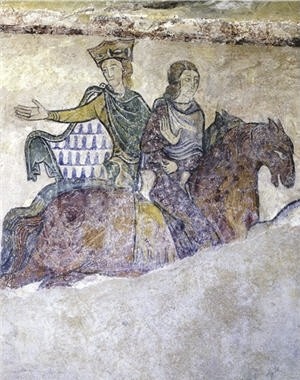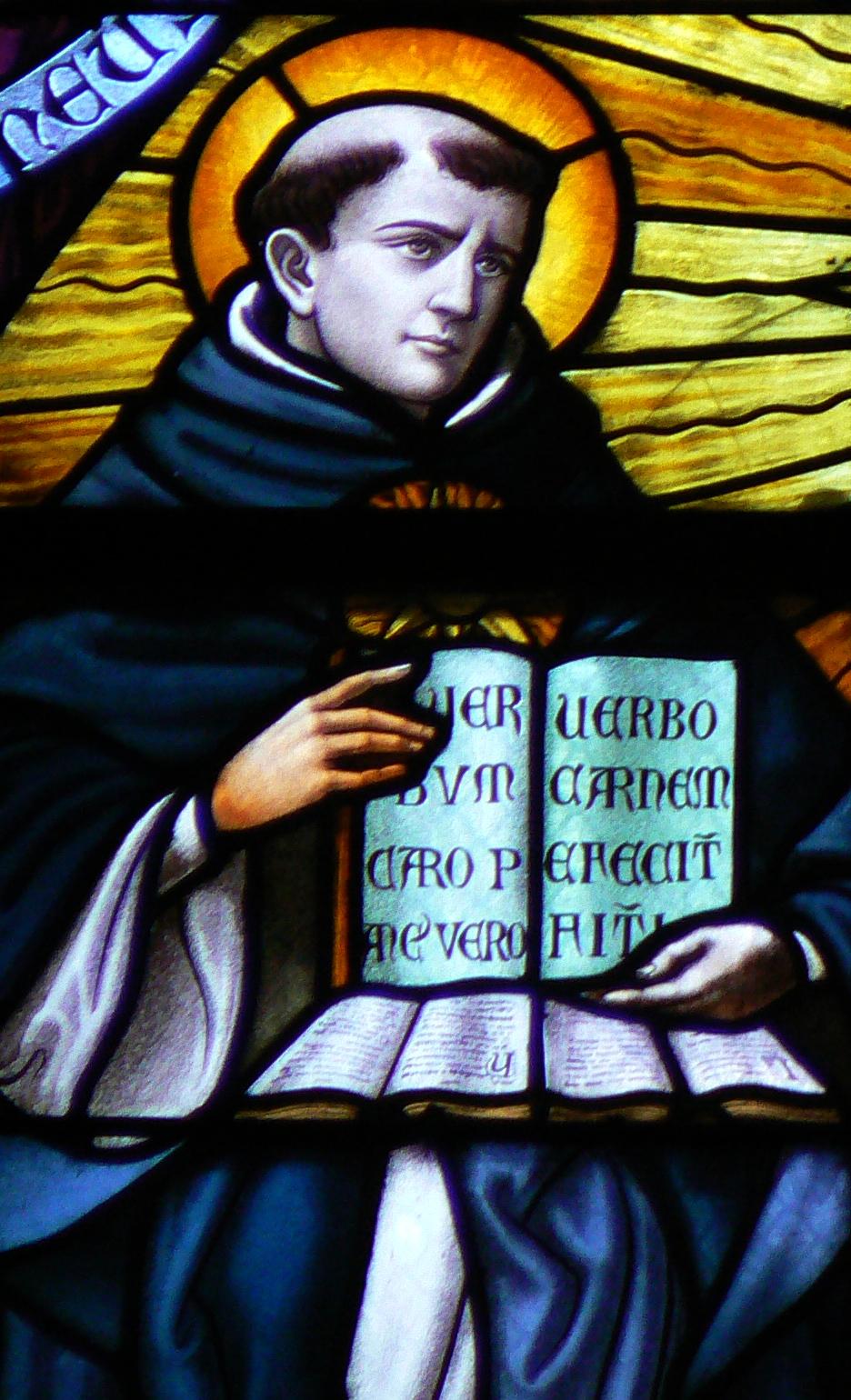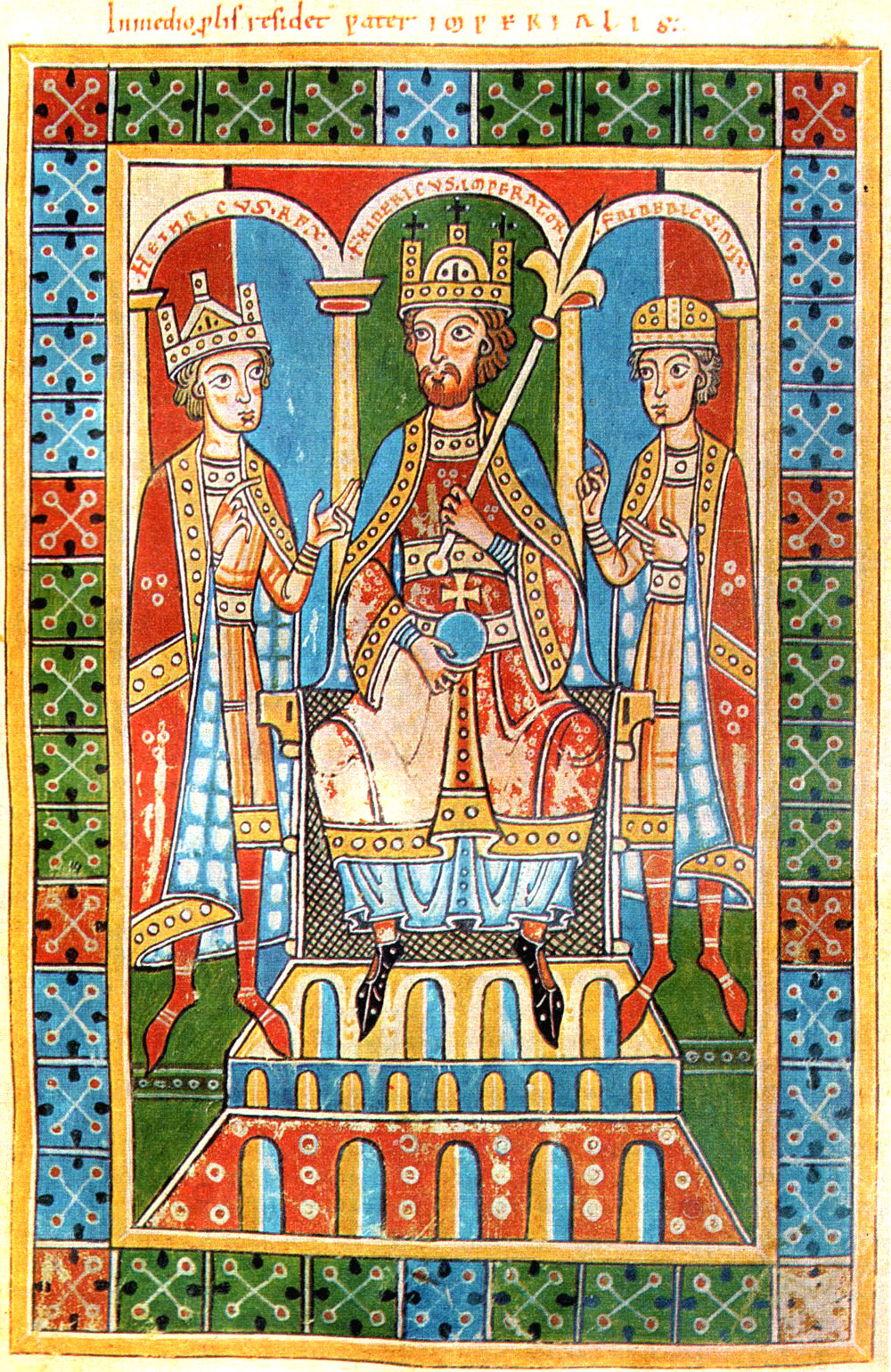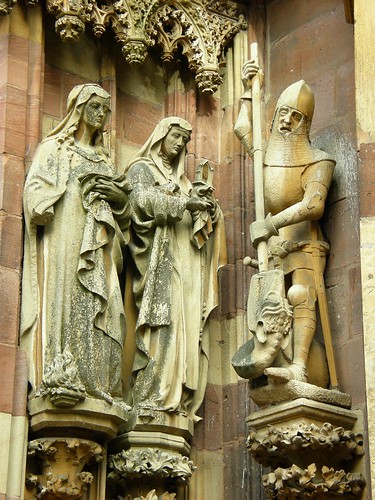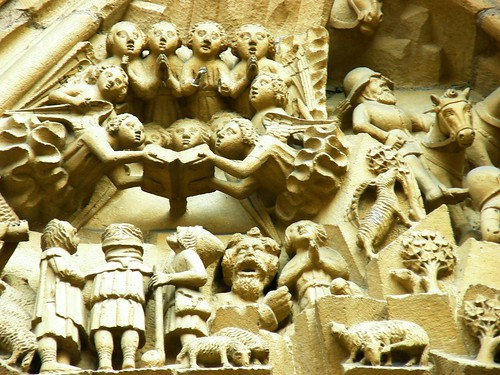In 1139 Pope Innocent issued a bull placing the Templars under an exclusive vow of papal obedience - a measure by which Aimeric effectively put all Templar resources at the disposal of the papacy. As their list of properties lengthened with donations from Italy, Austria, Germany, Hungary and the Holy Land, the Templars built hundreds of stone castles. Convinced they were building a new world, the Templars called each other frere macon (brother mason). Later this was anglicized into Freemason. In October 1307, King Philip of France arrested all but thirteen of the Templars in France, tried them, and upon evidence of their practice of the cabalah, found them guilty of blasphemy and magic. At least fifty knights were burned at the stake. A subtle provision in the Vox clamantis transfered most of the Templar estates to the Knights of St. John of Jerusalem, who took possesion after King Philip's death. In Germany and Austria, the Templars became "Rosicrucians" and "Teutonic Knights." The Teutonic Knights grew strong in Mainz, birthplace of Guetenberg's press. Six centuries later, as the "Teutonic Order," the Knights would provide the nucleus of Adolf Hitler's political support in Munich and Vienna.
The Edinburgh lodge would become the headquarters of Scottish Rite Freemasonry, which Masonic historians call "American Freemasonry" because all but five of the signers of the Declaration of Independence are said to have practiced its craft. In Spain and Portugal the Templars became the "Illuminati", and the "Knights of Christ." It was under the red pattée cross of the Knights of Christ that Columbus had taken possession of what he called "las Indias" for King Ferdinand V of Spain, the Holy Roman Emperor. (Rulers of Evil, p.39-40, Tupper Saussy)
The Knights Templar and Adolf Hitler
Oddly, this subject of the Knight's Templar and Adolf Hitler connection came out in the Assassin's Creed Video Game. Is this another attempt to forge two periods of history that have still left many questions unanswered? Here's a description of one aspect of the Assasin Creed GameDespite their defeat at the hands of the assassin Ezio Auditore da Firenze, the Templar order continued to exist within the shadow. Infiltrating or starting up countless corporate entities, the Templars positioned its members in several world-defining positions, improving the planets technological level significantly. The Templars also worked to stifle world progress however; Adolf Hitler used a Piece of Eden to rise to power in Germany, and subsequently started a world-wide conflict. He was "fought" by his Templar counterparts Winston Churchill and Joseph Stalin, who ultimately won the conflict though it appears that FDR was an assassin.Of course, one can only hold true some aspects of the game that can actually be proven by historians, and documented fact. However, as records show Adolf Hitler dabbled a bit in the Occult. In 1942, after Germany's invasion of Belgium, Hitler sent the Gestapo (Secret Police) to seek out the Offices of the General Secretariat of the Order of the Temple in Brussels. Hitler believed by looking into the Order's records in Belgium, he would gain knowledge and the whereabouts of the Ark of the Covenant. On the night before the Gestapo arrived, Emile Clement Vanderburg, the Guardian of the Order, somehow was notified about Hitler's plans and he immediately collected the records and took them out of Belgium and into neutral-Portugal. He presented his records to the Grand Prior of Portugal, Don Antonio Campello de Sousa Fontes, who safeguarded them until the end of World War II.
Resources Zubras, Vincent. "Larmenius Charter and the Legitamacy of Modern Day Knights Templar." Knight Templar Organization. N.p., n.d. Web. 13 Jun 2010 Hitler Photography Source

